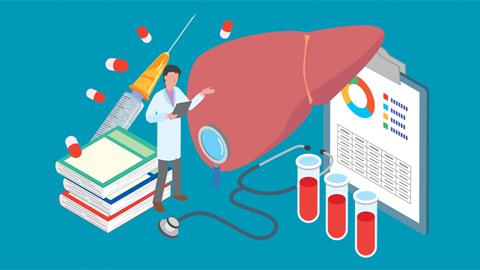Keep it safe
Over the course of the year, I’ve discussed best practices in image acquisition and manipulation, but I haven’t really talked about data and data management. I recently had the opportunity to hear Brian Nosek from the Center for Open Science speak, and he summed it up perfectly: “The report is advertisement for research. The data is the actual research.”
What steps are you taking to ensure that the research record is maintained and that the data you’ve labored to gather are protected?
I’m sure you’ve heard many times about the importance of keeping good research records and storing samples appropriately in obligatory classes on responsible conduct of research or from your mentor, so I won’t belabor these points. Nothing is more frustrating when you’re assembling figures or writing up your results months or years after data collection than not being able to piece together how an experiment was performed. Additionally, proper storage ensures that samples can be used later, which may be particularly important when sample size is limited or you need to return to these samples years down the road. But what about film, pictures or any other data files that you’ve collected?
With regard to blots or micrographs, I suggest multiple forms of storage. If you are acquiring images from blots using an imaging system, retain the native, system-generated file in addition to the exported image file in TIFF format. The same goes for micrographs. TIFF files are a universal file format that can be opened by anybody without specialized software. The same cannot be said for the system-generated file. If you are scanning film, save it in TIFF format and be sure also to save the film. If the computer collecting the data is a shared computer, make sure you keep a copy for your records. With multiple users, you cannot guarantee that your file won’t get accidentally deleted or corrupted.
What about data from an instrument using obsolete software? Some people keep a legacy system so they can open the original system-generated file long after the instrument stops running. If at all possible, export the data into a universal file format. Often you can export column runs or FACS data as Excel or PowerPoint files.
When you are saving images, make sure you save the entire blot or gel, because it tells the whole picture of the experiment. You can always make a copy of the image to crop if the additional space isn’t necessary for the paper. The original always should be retained, as it’s better to keep something rather than throw away information that may be useful later. For example, a reviewer may ask you to indicate molecular weight markers or to show the full scan of the blot, and you would be at a loss if you only saved a portion. Also, while adjusting the settings of your image may be necessary when assembling figures, make sure to save a completely unaltered image for your records.
Finally, it’s important to back up your files and to store them in a safe location. Ideally, a backup should be kept separate from the original data in case something catastrophic should happen at the original location. Cloud storage as well as the availability of cheap, portable hard drives make storing safe, secure backups a relatively easy thing to do.
How long are you supposed to retain your data? There’s no clear-cut answer. Institutions generally have their own policies in place. If your research is funded by the National Institutes of Health, then the general rule is that data must be retained for at least three years after filing the final financial report for the grant. Another number often thrown around is six years, as this is the statute of limitations for pursuing cases adopted by the Office of Research Integrity, the oversight office for research funded by the U.S. Public Health Service. What is likely less known is that any time an author benefits from the work, such as citing the work in a grant application or paper, the clock resets for the ORI to investigate cases of falsification, fabrication and plagiarism. Change also is on the horizon as the NIH develops policies on data retention and sharing. Remember, though, there is no limit to how long an article may be read and cited, so why should there be a time limit for retaining data?
Enjoy reading ASBMB Today?
Become a member to receive the print edition monthly and the digital edition weekly.
Learn moreGet the latest from ASBMB Today
Enter your email address, and we’ll send you a weekly email with recent articles, interviews and more.
Latest in Science
Science highlights or most popular articles

Iron could be key to treating a global parasitic disease
A study has found that leishmaniasis causes body-wide changes in iron balance, leading to red blood cell damage.

Environmental DNA is everywhere
The ability to extract trace bits of DNA from soil, water, and even air is revolutionizing science. Are there pitfalls?

Early COVID-19 research is riddled with poor methods and low-quality results
The pandemic worsened, but didn’t create, this problem for science.

From the journals: MCP
Three views of mass spec: analyzing secreted protein spectra, imaging mass spectrometry for clinical use and spectral libraries for MS data analysis. Read about these recent papers.

Understanding the fat science
Researchers at UCLA investigate lipid remodeling in the liver for energy generation.

No oxygen? No problem
By studying how electric fish survive in hypoxic streams for months at time, researchers may find new ways to target tumors.

